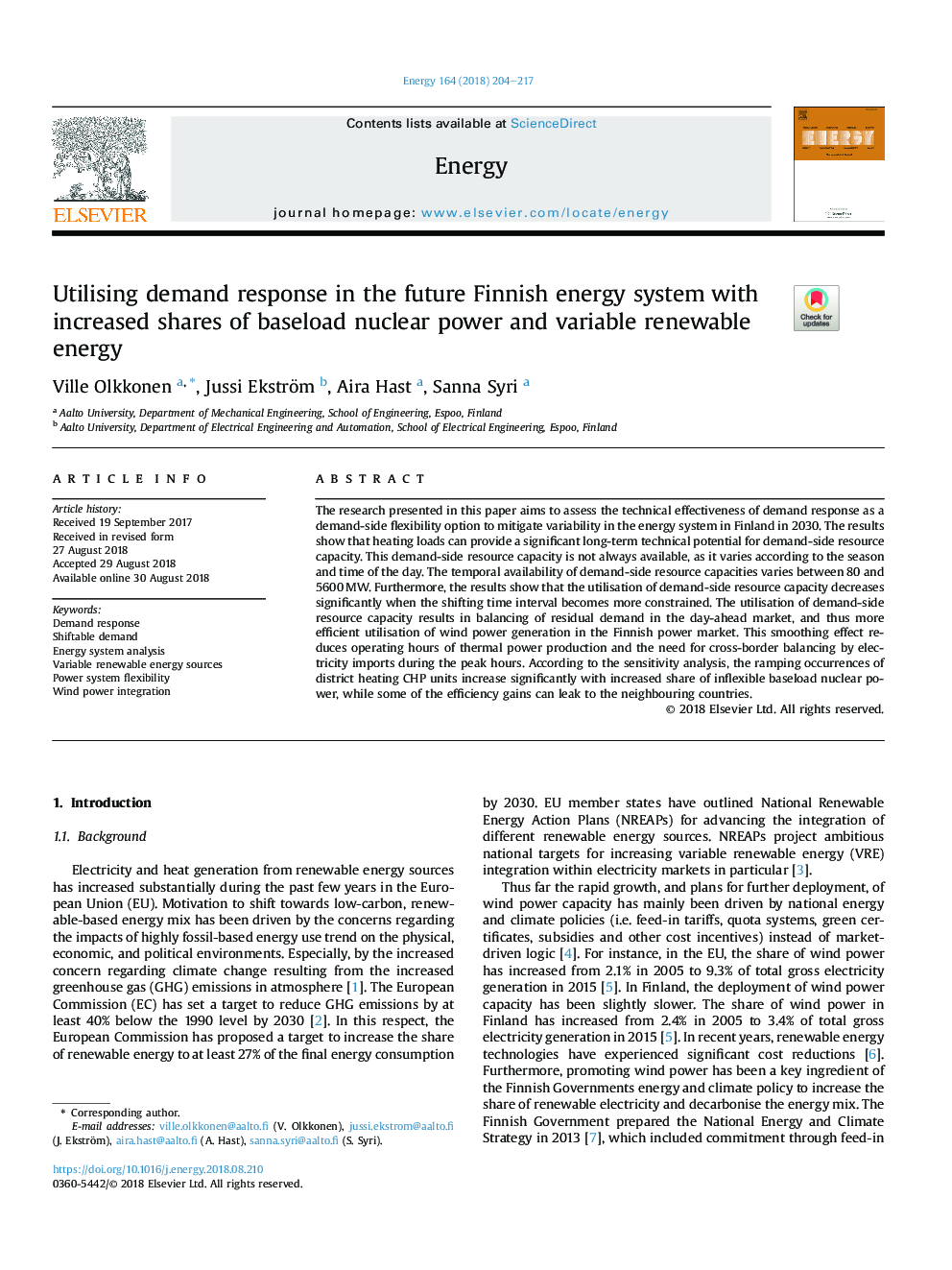| Article ID | Journal | Published Year | Pages | File Type |
|---|---|---|---|---|
| 10147755 | Energy | 2018 | 14 Pages |
Abstract
The research presented in this paper aims to assess the technical effectiveness of demand response as a demand-side flexibility option to mitigate variability in the energy system in Finland in 2030. The results show that heating loads can provide a significant long-term technical potential for demand-side resource capacity. This demand-side resource capacity is not always available, as it varies according to the season and time of the day. The temporal availability of demand-side resource capacities varies between 80 and 5600â¯MW. Furthermore, the results show that the utilisation of demand-side resource capacity decreases significantly when the shifting time interval becomes more constrained. The utilisation of demand-side resource capacity results in balancing of residual demand in the day-ahead market, and thus more efficient utilisation of wind power generation in the Finnish power market. This smoothing effect reduces operating hours of thermal power production and the need for cross-border balancing by electricity imports during the peak hours. According to the sensitivity analysis, the ramping occurrences of district heating CHP units increase significantly with increased share of inflexible baseload nuclear power, while some of the efficiency gains can leak to the neighbouring countries.
Keywords
Related Topics
Physical Sciences and Engineering
Energy
Energy (General)
Authors
Ville Olkkonen, Jussi Ekström, Aira Hast, Sanna Syri,
